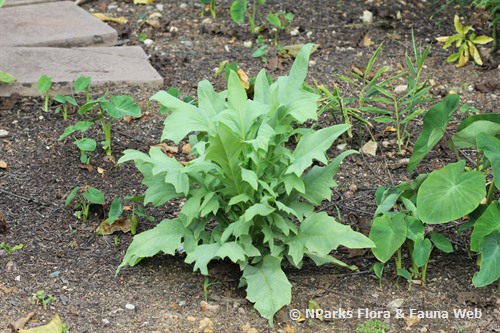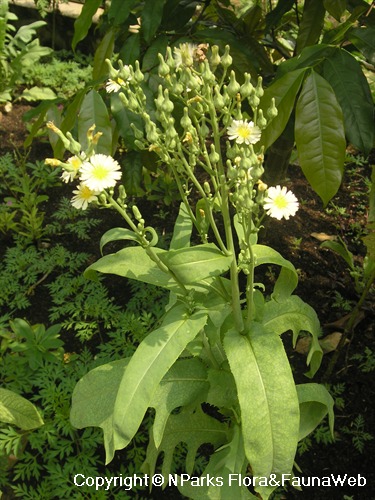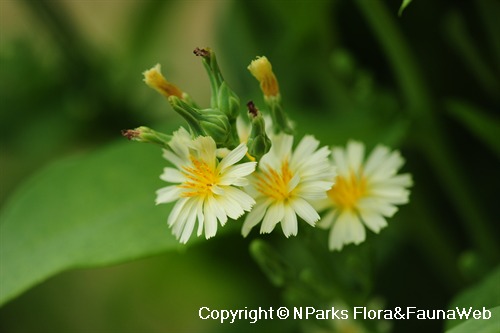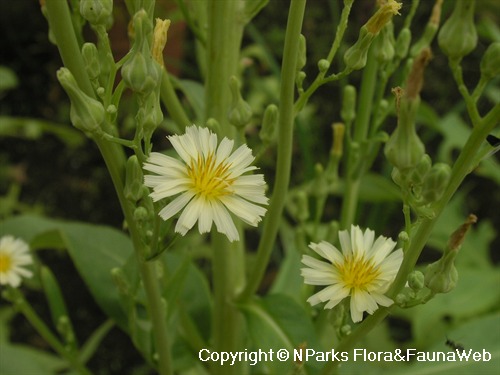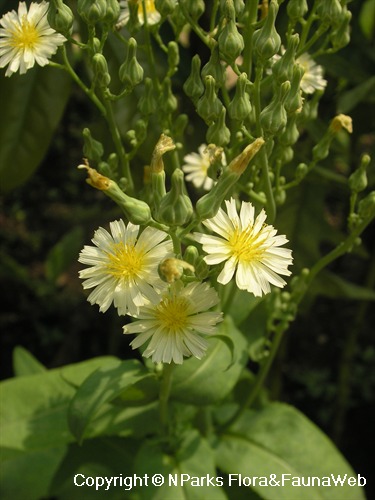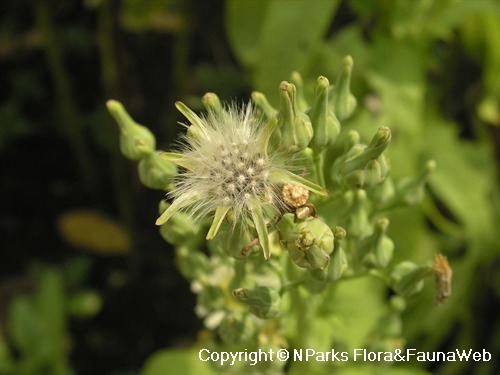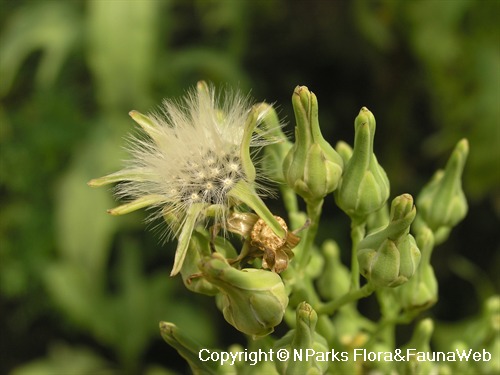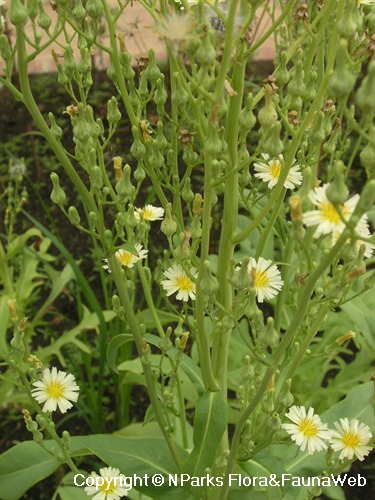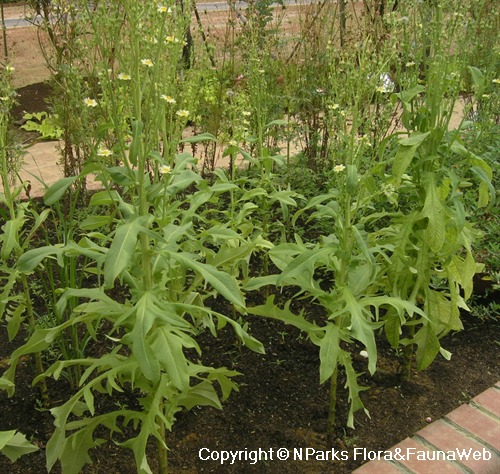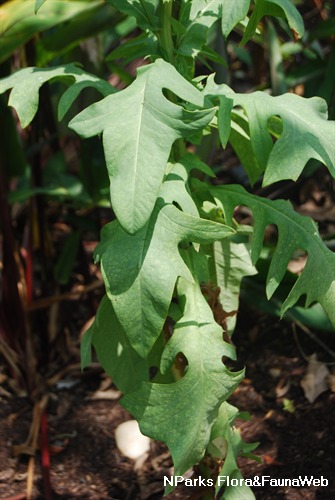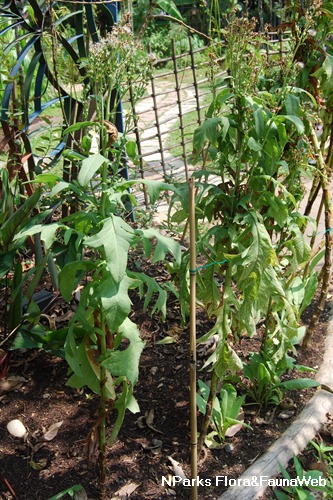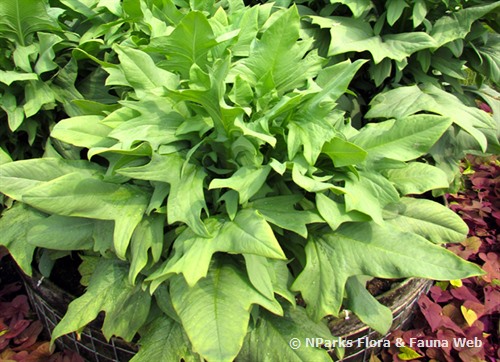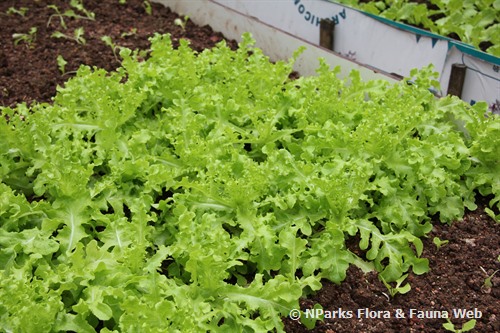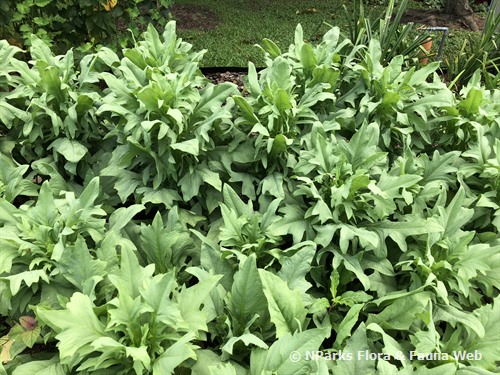
Back
Lactuca indica L.
| Family Name: | Asteraceae (Compositae) |
| Synonyms: | Lactuca brevirostris, Lactuca inermis |
| Common Name: | Indian Lettuce, 山莴苣 |
Name
Classifications and Characteristics
| Plant Division | Angiosperms (Flowering Seed Plants) (Dicotyledon) |
|---|---|
| Plant Growth Form | Herbaceous Plant |
| Lifespan (in Singapore) | Semi-Annual / Annual-Like |
| Mode of Nutrition | Autotrophic |
Biogeography
| Native Distribution | China, Taiwan and southern Japan |
|---|---|
| Preferred Climate Zone | Sub-Tropical / Monsoonal, Temperate |
Description and Ethnobotany
| Growth Form | A herbaceous erect herb that grows up to 2 m tall when flowering. |
|---|---|
| Foliage | Leaves of L. indica are alternate, sessile (= without petioles) and arranged in a rosette on the young plant. Leaf shape oblong-lanceolate, but can be very variable. |
| Flowers | Mature plants produce basal erect subterranean shoots, known as tillers. Flowers are bright yellow, small and numerous on terminal inflorescences that are 50-100 cm in length. |
| Fruit | Fruits of L. indica are flat elliptical achenes (= small, dry indehiscent fruits, each with a single compartment containing a single seed), black, shortly beaked and hard, each with a tuft of white hairs at the top. |
| Others - Plant Morphology | Native to China, Taiwan and southern Japan, where it both grows wild and is cultivated, Lactuca indica was probably introduced to Southeast Asia by Chinese immigrants. It is also relatively common in Indonesia and Malaysia. |
| Habitat | Cultivated in the lowlands, up to an altitude of 2000 m, L. indica sometimes escapes from cultivation to grow in a variety of locations, such ravines, fields and roadsides. |
| Taxonomy | Lactuca is derived from the Latin name “lactuca” or “lactucae”, in reference to the milky white sap produced by the plant when injured. The specific epithet, indica, is Indian in origin, used loosely for the Orient. |
| Cultivation | Fertile, well-drained soils with high organic matter content are preferred, but L. indica is able to tolerate a wide range of soils. Propagation is carried out by seed, or root cuttings (these easily develop buds). |
| Ethnobotanical Uses | Edible Plant Parts : Edible Leaves Food (Fruit or Vegetable): Food: L. indica is grown mainly for its leaves, which are eaten as a vegetable (raw, boiled or steamed) or used for wrapping and frying fish. (Herb or Spice) Others: L. indica is used as a feed for geese in Taiwan, while the leaves may be fed to silkworms as a substitute for mulberry. Leaves of L. indica are used as a tonic, digestive and depurative in traditional medicine |
Landscaping Features
| Desirable Plant Features | Ornamental Flowers |
|---|---|
| Landscape Uses | General, Flowerbed / Border |
Fauna, Pollination and Dispersal
| Seed or Spore Dispersal | Abiotic |
|---|
Plant Care and Propagation
| Light Preference | Full Sun |
|---|---|
| Water Preference | Lots of Water, Moderate Water |
| Plant Growth Rate | Fast |
| Rootzone Tolerance | Fertile Loamy Soils, Well-Drained Soils |
Foliar
| Mature Foliage Colour(s) | Green |
|---|---|
| Foliar Arrangement Along Stem | Alternate |
| Foliar Shape(s) | Non-Palm Foliage (Lanceolate, Oblong) |
| Foliar Apex - Tip | Acute |
Non - Foliar and Storage
| Stem Type & Modification | Herbaceous |
|---|
Floral (Angiosperm)
| Flower Colour(s) | Cream / Off-White, Yellow / Golden |
|---|
Fruit, Seed and Spore
| Fruit Type | Indehiscent Dry Fruit , Achene |
Image Repository
Others
| Master ID | 30536 |
|---|---|
| Species ID | 4845 |
| Flora Disclaimer | The information in this website has been compiled from reliable sources, such as reference works on medicinal plants. It is not a substitute for medical advice or treatment and NParks does not purport to provide any medical advice. Readers should always consult his/her physician before using or consuming a plant for medicinal purposes. |

